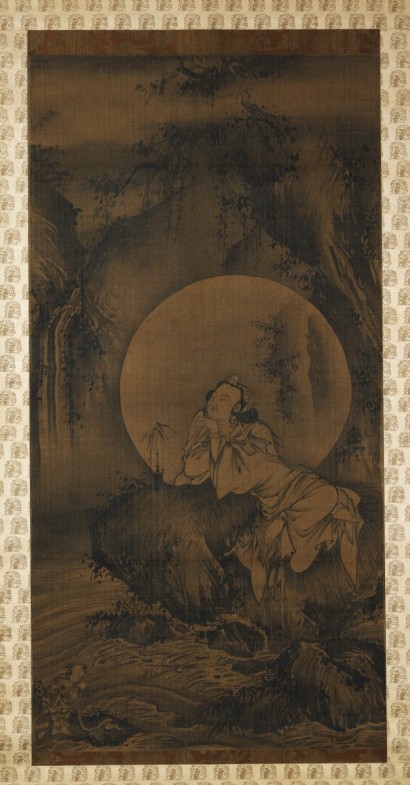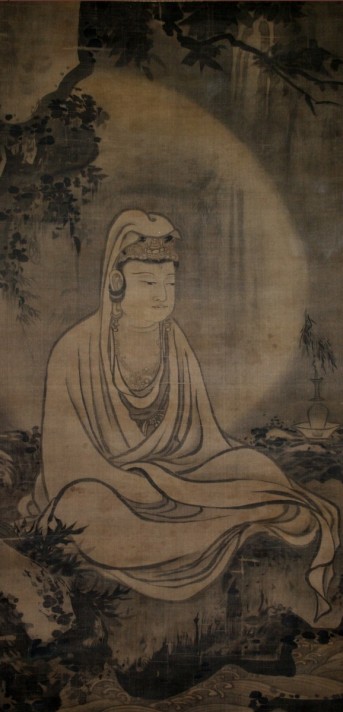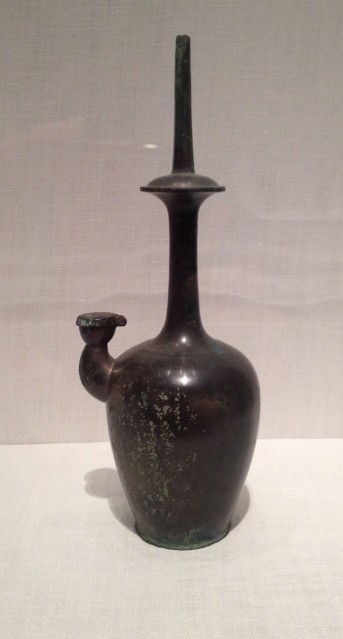Japan, Muromachi period, late 14th century; hanging scroll, ink on silk; image: 37 15/16 x 19 3/8 in., mount: 73 1/4 x 23 15/16 in.; Princeton University Art Museum, Gift of Duane Wilder, Class of 1951, y1992-6, photo: Bruce M. White, Courtesy of Princeton University Art Museum/Art Resource, NY.
Zen Buddhist artists often depicted the White-robed Kannon in works such as this one, which shows the willow branch, vase, and waterfall that are among the bodhisattva’s most common attributes in East Asia. As seen here, these depictions are set on Potalaka, Kannon’s mythical island, which took local form in places such as Mount Putuo in China and Nachi in Japan. The figure at bottom left is Sudhana, a pilgrim from the Avatamsaka Sutra, who travels to see many wise figures, including Avalokiteshvara, for teachings on enlightenment. Dressed in voluminous white robes and reposing at ease in an idyllic landscape, the bodhisattva appears here as a model for contemplative wisdom. LK






